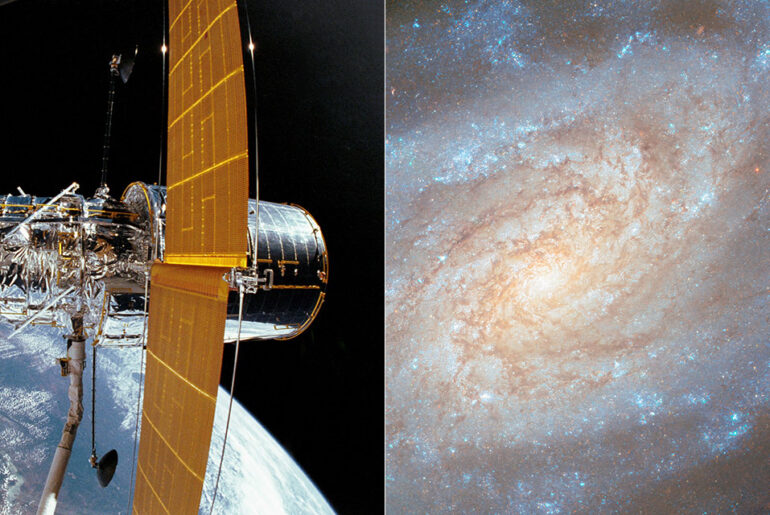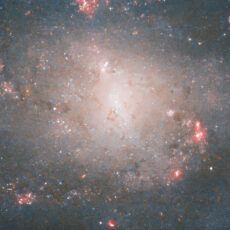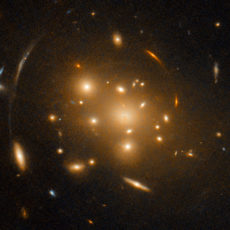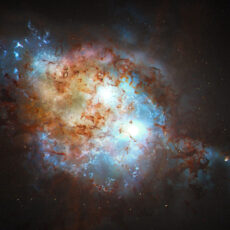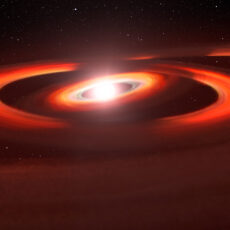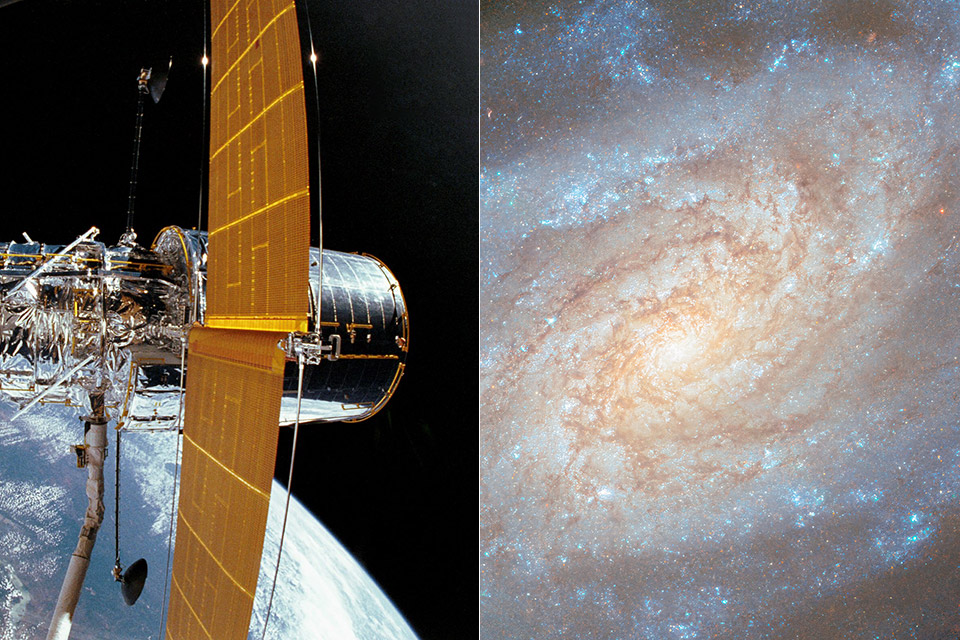
For over two decades now, NASA / ESA’s Hubble Space Telescope has been coming back NGC 3370, a spiral galaxy 90 million light-years away in Leo, for another look, and their latest image shows off the galaxy’s stars in hypnotic fashion as they gradually fade from bright yellow in the center to those vivid blues at the edges.
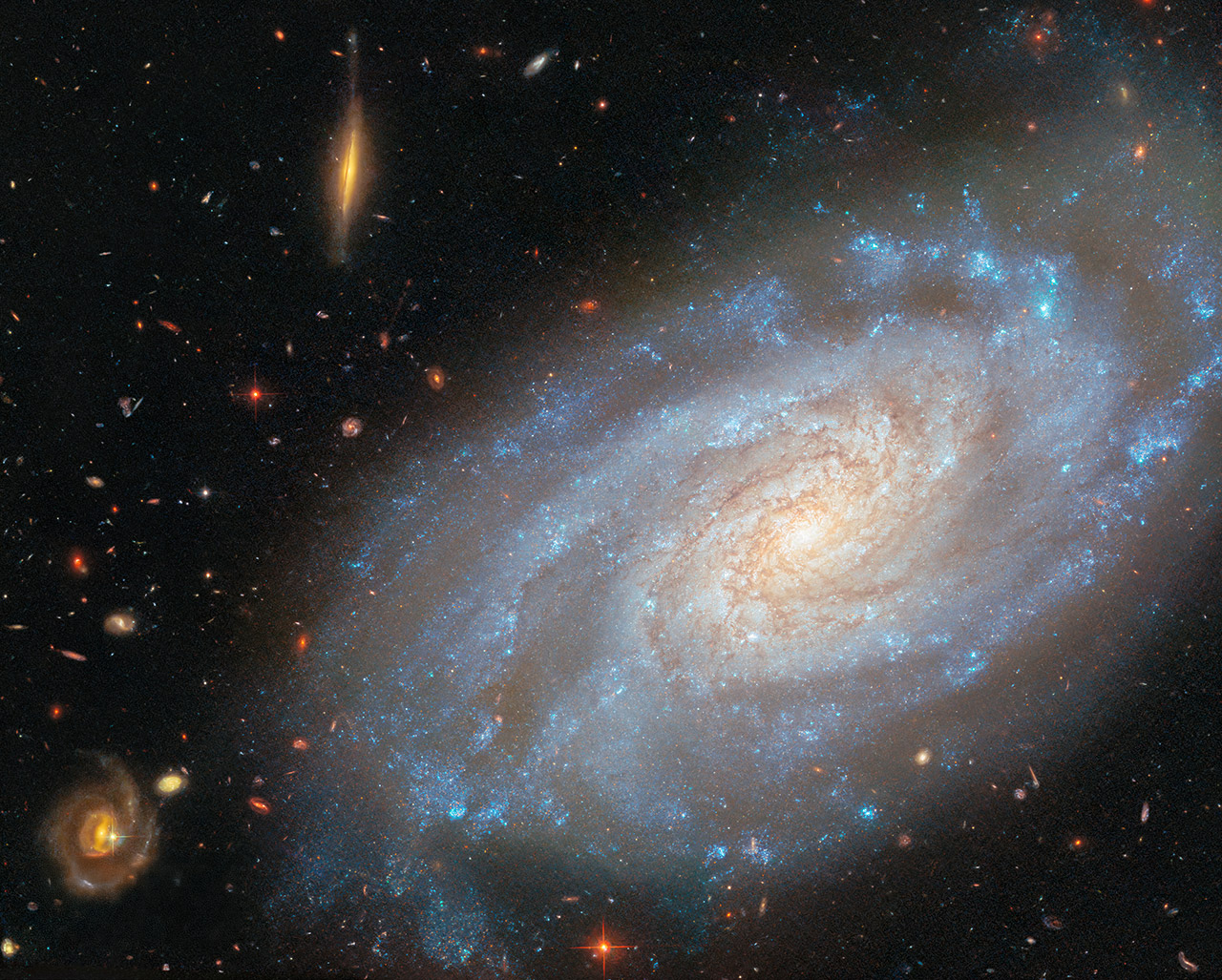
One reason astronomers keep coming back to NGC 3370 is because of those Cepheid variable stars – their light levels change over the course of a day or a month – which lets us measure how bright a star really is, and compare that to how dim it looks from here on earth. It’s almost like using a lighthouse’s beam to get a better idea of where across that fog you are.
- 2 AVIATION LEGENDS, 1 BUILD – Recreate the iconic Boeing 747 and NASA Space Shuttle Enterprise with the LEGO Icons Shuttle Carrier Aircraft (10360)...
- DEPLOY LANDING GEAR – Turn the dial to extend the massive 18-wheel landing system on your airplane model, just like real flight operations
- AUTHENTIC FEATURES & DETAILS – Remove the tail cone, engines, and landing gear from the NASA shuttle and stow them in the cargo bay during flight
Then there are the Type Ia supernovae that make NGC 3370 so attractive, or to astronomers anyways. These explosions happen when a dead star’s core goes off like a nuclear firework, and every single one of them is about the same intensity when they peak, so we can use them to measure distances all over the universe. Unlike the steady beat of the Cepheid variables, the supernovae provide just one, fleeting moment of dazzling brightness, helping us map out the universe.
The new image of NGC 3370 is based on a much older pic taken way back in 2003, but this time, Hubble gets in close and snatches up some wavelengths of light it couldn’t catch before. You now get to see star clusters in the spiral arms up close, as well as dust clouds swirling around the core. And you’d be surprised – NGC 3370 is not actually a lone star, its is part of the larger NGC 3370 group, which includes a few neighbouring galaxies like NGC 3447 and NGC 3455, which Hubble has had a good go at studying recently.
It’s no wonder astronomers keep coming back to NGC 3370, as cepheids and Type Ia supernovae are the main stars of the show here. They work like cosmic measuring tapes that let us get a better handle on how fast galaxies are drifting apart. The image was taken by Hubble’s Advanced Camera for Surveys and Wide Field Camera 3, which has a field of view a bit over 3 arcminutes.

